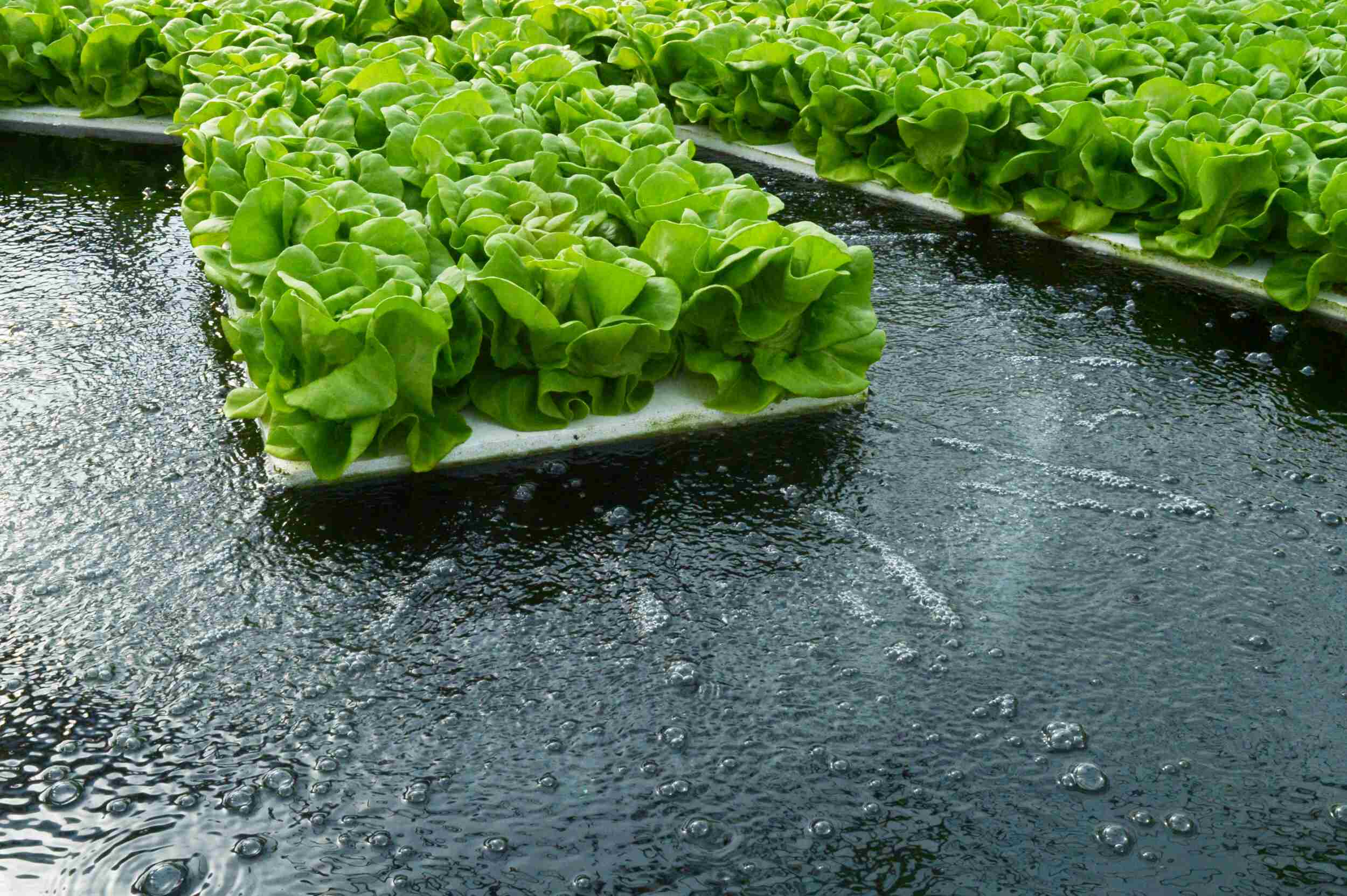Home>Gardening News and Trends>Latest News>Which Of The Following Is An Advantage Of Using Bt To Control Insects?


Latest News
Which Of The Following Is An Advantage Of Using Bt To Control Insects?
Modified: January 22, 2024
Discover the latest news on the advantages of using BT to control insects. Stay informed and learn how BT can benefit your pest management strategies.
(Many of the links in this article redirect to a specific reviewed product. Your purchase of these products through affiliate links helps to generate commission for Chicagolandgardening.com, at no extra cost. Learn more)
Table of Contents
Introduction
When it comes to controlling insect populations, there are various methods available. One of the most effective and environmentally friendly options is the use of Bacillus thuringiensis (Bt). Bt is a naturally occurring bacterium that produces proteins toxic to certain insects. It has gained popularity as a biological control agent due to its numerous advantages over chemical insecticides.
In this article, we will explore the benefits of using Bt for insect control. From its natural control mechanisms to its targeted specificity, reduced chemical exposure, and cost-effectiveness, Bt has proven to be a valuable tool in pest management. Additionally, we will examine its low risk of resistance development, ease of application, and minimal harm to non-target organisms.
By understanding the advantages of using Bt, we can make informed decisions in pest management and contribute to the development of sustainable agricultural practices. So, let’s dive into the world of Bt and discover why it is considered a superior method for controlling insects.
Natural Control
One of the significant advantages of using Bt to control insects is its natural control mechanism. Bt is a naturally occurring bacterium found in soils worldwide. It produces crystal-like proteins known as “Cry” proteins, which are toxic to specific groups of insects. These toxins act by binding to receptors in the insect’s gut, leading to gut paralysis and ultimately death. This targeted approach ensures the effective control of the target insect while minimizing harm to beneficial insects and other organisms in the ecosystem.
Unlike chemical insecticides, Bt does not persist in the environment for extended periods. Once applied, the bacteria quickly break down in sunlight and soil, minimizing any potential long-term impact on the ecosystem. This natural control mechanism aligns with the principles of integrated pest management (IPM) and sustainable agriculture, promoting the use of environmentally friendly solutions that have minimal impact on the ecosystem’s balance.
Furthermore, using Bt as a natural control method can help reduce the reliance on synthetic chemical insecticides. Chemical insecticides often pose risks to human health, other non-target organisms, and the environment. By incorporating Bt into pest management strategies, farmers can reduce the use of these harmful chemicals, leading to a safer and more sustainable farming system.
In addition to its natural control properties, Bt offers other advantages that make it an attractive option for insect control. In the following sections, we will explore the target-specificity of Bt, its environmentally friendly characteristics, reduced chemical exposure, cost-effectiveness, minimal harm to non-target organisms, low risk of resistance development, and ease of application.
Target-Specificity
One of the key advantages of using Bt for insect control is its remarkable target-specificity. Unlike broad-spectrum chemical insecticides that can harm a wide range of organisms, Bt selectively targets specific groups of insects. This precision ensures that beneficial insects like bees, butterflies, and ladybugs, as well as other non-target organisms, remain unharmed.
Bt toxins are effective against specific insect orders, such as lepidopterans (moths and butterflies), coleopterans (beetles), and dipterans (flies and mosquitoes). Different strains of Bt produce distinct toxin profiles, allowing for specific targeting of particular insect pests. For example, Bt kurstaki is highly effective against lepidopteran larvae, while Bt israelensis is effective against mosquito and blackfly larvae.
The target-specificity of Bt is beneficial in integrated pest management (IPM) programs, where the goal is to maintain a balanced ecosystem and minimize the use of broad-spectrum chemicals. By targeting only specific pests, Bt helps preserve the natural enemies of these pests, such as predators and parasitoids, which play a vital role in regulating insect populations.
Furthermore, the target-specificity of Bt reduces the risk of developing resistance in insect populations. Unlike chemical insecticides, which can lead to resistant pests over time, Bt targets specific receptors in insect guts that are less likely to undergo mutation. This makes it a sustainable option in the long run, ensuring effective control of target pests without the need for constant adjustments in pest management strategies.
In summary, the target-specificity of Bt is a significant advantage in insect control. Its selective action allows for the preservation of beneficial insects and other non-target organisms while effectively targeting specific pest species. Furthermore, it reduces the risk of resistance development, making it a valuable tool in sustainable pest management practices.
Environmentally Friendly
Another major advantage of using Bt for insect control is its environmentally friendly nature. Bt is considered a low-risk pesticide due to its natural origin and targeted mode of action. This makes it an ideal choice for farmers and growers who prioritize sustainable and eco-friendly practices.
Unlike chemical insecticides, which can have detrimental effects on the environment, Bt has minimal impact on non-target organisms, water sources, and overall biodiversity. It specifically targets the pests while leaving beneficial insects, birds, and wildlife unharmed. This preservation of natural enemies helps maintain the balance of the ecosystem and promotes biodiversity on farms.
Moreover, Bt is biodegradable and breaks down relatively quickly in the environment. This means that residues of Bt are less likely to accumulate in soils, waterways, or food crops, reducing the risk of long-term contamination. It is also non-toxic to mammals, making it safe for farm animals, pets, and humans when used as directed.
The environmentally friendly nature of Bt aligns with the principles of sustainable agriculture and integrated pest management (IPM). It provides an effective alternative to synthetic chemical insecticides, which often have negative environmental impacts, such as polluting water sources, disrupting ecosystems, and harming non-target organisms.
Using Bt in insect control strategies contributes to the overall health and sustainability of agricultural systems. It allows farmers and growers to effectively manage pest populations while minimizing the ecological footprint of their practices. By choosing Bt, they can reduce the environmental risks associated with chemical insecticides and promote a more balanced and harmonious coexistence between agriculture and nature.
Reduced Chemical Exposure
One of the significant advantages of using Bt for insect control is the reduced chemical exposure for both farmers and consumers. Unlike traditional chemical insecticides, Bt does not pose the same level of risk to human health and the environment.
Chemical insecticides often contain toxic compounds that can have adverse effects on farmers, farm workers, and consumers. Prolonged exposure to these chemicals can lead to various health issues, such as respiratory problems, skin irritation, and even more severe conditions in the long term. By using Bt, farmers can minimize their exposure to these harmful chemicals, thus protecting their own health and well-being.
Additionally, Bt offers a solution to the issue of pesticide residues in food. Residues left by chemical insecticides on crops can contaminate the produce, leading to potential health risks for consumers. With Bt, the risk of pesticide residues is significantly reduced, as it breaks down naturally and quickly in the environment. This makes Bt-treated crops a safer option for consumption, providing peace of mind to both consumers and farmers alike.
Reduced chemical exposure is also beneficial for the environment. Chemical insecticides can persist in the soil, water, and air, causing pollution and negatively impacting ecosystems. By using Bt instead, farmers can contribute to a cleaner, healthier environment by minimizing chemical runoff and contamination.
By embracing Bt as a preferred method of insect control, farmers can enhance the sustainability and safety of their agricultural practices. This approach not only benefits them and their consumers but also demonstrates a commitment to responsible farming and the protection of human health and the environment.
Cost-Effective Solution
Using Bt as a method for insect control offers a cost-effective solution for farmers and growers. Compared to traditional chemical insecticides, Bt can provide significant cost savings while maintaining effective pest management.
One of the reasons why Bt is a cost-effective solution is its target-specificity. By selectively targeting specific pests, Bt reduces the need for broad-spectrum insecticides that can be more expensive. This precision ensures that farmers only treat the pests that pose a threat to their crops, eliminating unnecessary expenses associated with blanket insecticide applications.
Moreover, Bt is highly efficient at controlling the target pests. Its mode of action in the insect gut leads to gut paralysis and death, providing effective control with minimal application rates. This means that farmers can achieve the desired results with lower quantities of Bt compared to chemical insecticides.
Another cost-saving aspect of Bt is its reduced labor requirements. Traditional chemical insecticides often require additional safety measures, protective equipment, and specialized application techniques. With Bt, these extra steps are minimized, reducing the labor and time needed for application. The simplicity and ease of use of Bt make it a convenient and efficient option for pest control in various agricultural settings.
Furthermore, Bt’s compatibility with integrated pest management (IPM) strategies can lead to long-term cost savings. By incorporating Bt into a holistic pest management approach that includes cultural practices, biological control, and monitoring, farmers can reduce reliance on chemical insecticides and maintain a more sustainable, cost-efficient system.
In summary, using Bt as a cost-effective solution for insect control offers significant benefits to farmers and growers. Its target-specificity, efficiency, reduced labor requirements, and compatibility with IPM strategies contribute to lower overall costs while maintaining effective pest management. By choosing Bt, farmers can optimize their resources, minimize expenses, and achieve sustainable pest control practices in a cost-effective manner.
Less Harm to Non-Target Organisms
Using Bt as a method for insect control offers the advantage of causing less harm to non-target organisms compared to chemical insecticides. This is crucial for maintaining the balance of ecosystems and promoting biodiversity.
Unlike broad-spectrum chemical insecticides that can harm a wide range of organisms, Bt specifically targets the pests it is intended to control. This precision ensures that beneficial insects, such as pollinators (bees, butterflies), predators (ladybugs, lacewings), and parasitoids (wasps), remain unharmed. These beneficial insects play a crucial role in natural pest control, helping to keep pest populations in check and reducing the need for intensive chemical applications.
Additionally, Bt is safe for other non-target organisms, including birds, mammals, and aquatic life. It breaks down naturally and poses minimal risk to these organisms when used as directed. This is particularly important when considering agricultural practices that rely on a diverse range of species for ecosystem services and sustainable farming.
The preservation of non-target organisms is an essential aspect of integrated pest management (IPM), an ecologically-based approach to pest control. By using Bt in conjunction with other IPM practices, farmers can support the natural enemies of pests and create a more balanced and resilient ecosystem on their farms.
Furthermore, the reduced impact on non-target organisms is not limited to agricultural settings. Bt can also be used in urban areas and natural habitats, where its targeted action helps control pests without harming beneficial insects and wildlife.
Overall, the use of Bt for insect control ensures less harm to non-target organisms, promoting biodiversity and ecosystem health. By prioritizing the preservation of beneficial insects and other wildlife, farmers and land managers can maintain a more sustainable and harmonious relationship with the natural environment.
Low Risk of Resistance Development
One of the significant advantages of using Bt for insect control is its low risk of resistance development. Resistance occurs when pests become less susceptible to a particular control method, rendering it ineffective over time. This is a major concern with chemical insecticides, but Bt offers a solution to this problem.
Bt has a different mode of action compared to chemical insecticides, making it less prone to resistance development. Bt toxins specifically target receptors in the insect gut, causing gut paralysis and eventual death. These receptors are less likely to undergo mutation, reducing the chances of pests developing resistance to Bt.
Furthermore, Bt is available in different strains, each producing a distinct toxin profile. This diversity makes it difficult for pests to develop cross-resistance to multiple strains of Bt, as each strain targets different receptors in the insect gut. By utilizing a mix of Bt strains or rotating them in crop production, farmers can further reduce the risk of resistance development.
In contrast, pests can develop resistance to chemical insecticides due to their broad-spectrum nature and consistent mode of action. The repeated use of the same chemical insecticide can select for resistant individuals within pest populations. This necessitates the use of higher doses or different chemical compounds, leading to increased costs and potential negative environmental impacts.
By incorporating Bt into integrated pest management (IPM) programs, farmers can minimize the risk of resistance development while maintaining effective pest control. The use of multiple control methods, including crop rotation, biological control, and cultural practices, alongside Bt applications, creates a more complex and challenging environment for pests, reducing the likelihood of resistance.
Overall, the low risk of resistance development is a significant advantage of using Bt for insect control. Its unique mode of action and the ability to use different strains minimize the chances of pests developing resistance over time. By adopting a proactive and diverse approach to pest management, farmers can prolong the effectiveness of Bt and maintain sustainable control of target pests.
Ease of Application
Another advantage of using Bt for insect control is its ease of application. Bt can be applied using various methods, making it convenient and accessible for farmers and growers.
One common method of applying Bt is through foliar applications, where the Bt solution is sprayed onto the leaves of the crop. This method is particularly effective against pests that feed on the foliage, such as caterpillars. The application can be done using simple sprayers or larger-scale equipment, depending on the size of the operation. Foliar applications are relatively quick and easy, allowing farmers to treat their crops efficiently.
In addition to foliar applications, Bt can also be applied as a seed treatment. Treating seeds with Bt ensures that the young plants are protected from early insect infestation. This method is particularly useful in crops where pests like corn borers or stem borers can cause significant damage in the early stages of growth. Seed treatments can be done during the planting process, making it a convenient and efficient way to incorporate Bt protection into the crop.
Another advantage is that Bt applications can be compatible with existing pesticide application equipment and practices. This means that farmers can integrate Bt into their existing pest management plans without significant modifications or investments. It allows for seamless integration into conventional farming systems and simplifies the adoption of Bt as an insect control method.
Furthermore, the ease of application extends beyond traditional farming practices. Bt products are also available in formulations suitable for home gardens, urban landscapes, and natural habitats. This accessibility allows homeowners and land managers to effectively control pests without the need for specialized knowledge or equipment.
Overall, the ease of application makes Bt a convenient solution for insect control. Its compatibility with different application methods, including foliar sprays and seed treatments, ensures that farmers have flexibility in incorporating Bt into their pest management practices. This accessibility, along with its effectiveness and environmentally friendly nature, makes Bt an attractive choice for both commercial growers and home gardeners.
Conclusion
Bacillus thuringiensis (Bt) offers a multitude of advantages as a method for insect control. Its natural control mechanisms, target-specificity, and low risk of resistance development make it a superior choice over chemical insecticides. Additionally, Bt is environmentally friendly, causing minimal harm to non-target organisms and reducing chemical exposure for farmers and consumers alike. It is a cost-effective solution that provides effective pest management while preserving beneficial insects and wildlife.
The ease of application further adds to the appeal of using Bt. With various application methods available, farmers can seamlessly incorporate Bt into their existing pest management practices, ensuring convenience and efficiency.
By embracing Bt as a preferred method for insect control, farmers and growers can contribute to sustainable agricultural practices. Utilizing Bt as part of integrated pest management (IPM) programs allows for a holistic approach to pest control, minimizing the reliance on chemical insecticides and promoting a balanced ecosystem. This not only benefits farmers and consumers but also supports the long-term health of the environment.
In conclusion, Bt proves to be a powerful and eco-friendly tool for insect control. Its numerous advantages, including natural control mechanisms, target-specificity, reduced chemical exposure, cost-effectiveness, minimal harm to non-target organisms, low risk of resistance development, and ease of application, position it as a preferred choice in pest management. By harnessing the power of Bt, we can cultivate sustainable and thriving agricultural systems while protecting the delicate balance of our ecosystems.





